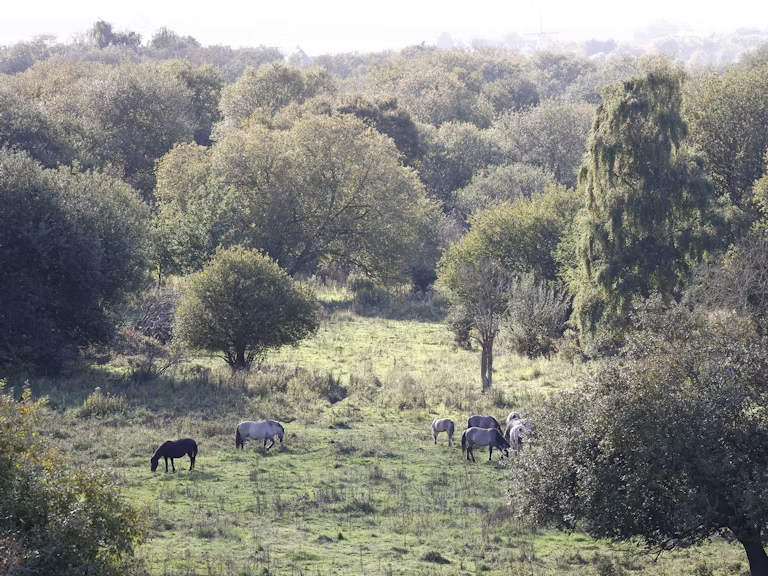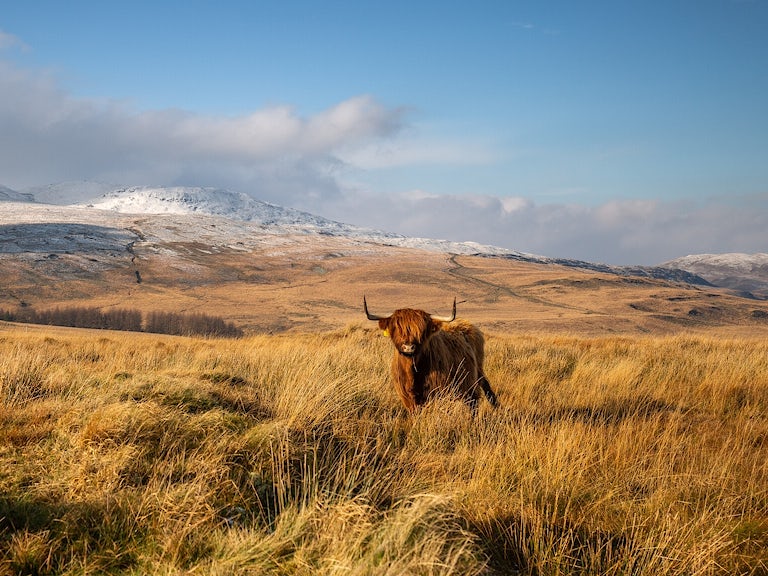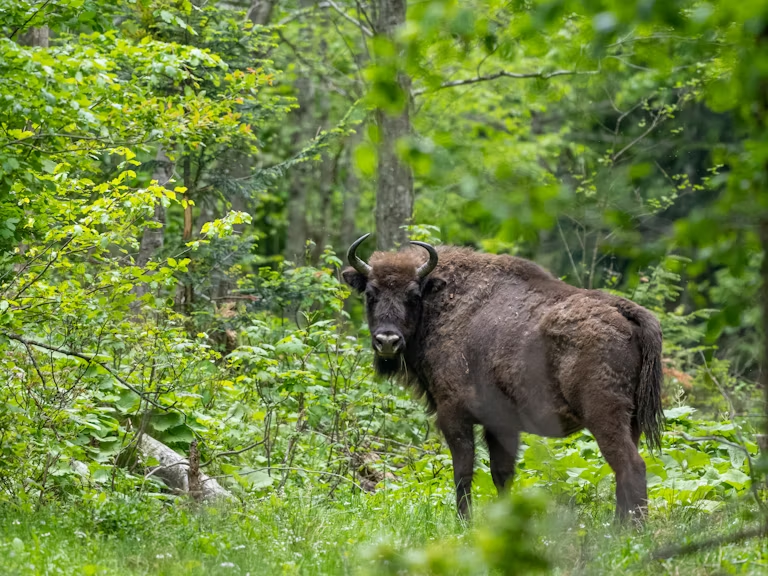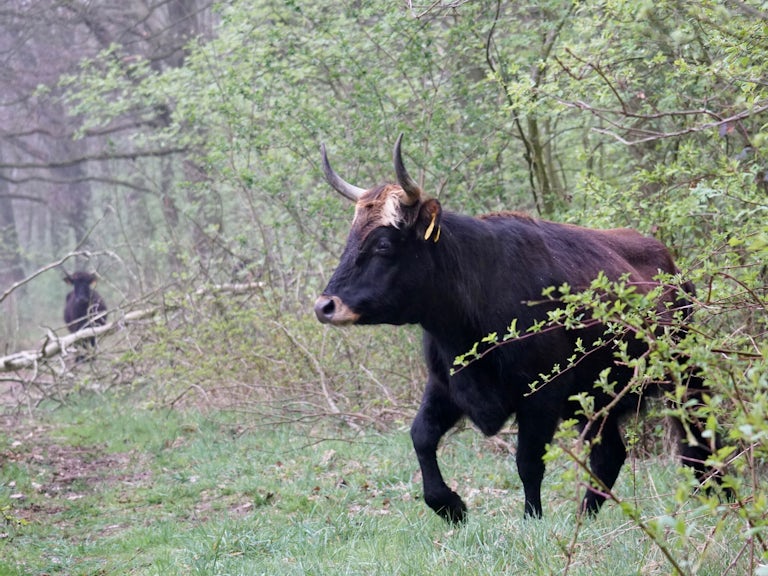Aurochs (cow)
Bos primigenius
Europe’s original wild cattle, the huge aurochs would have fundamentally influenced the shape of Britain’s landscapes.
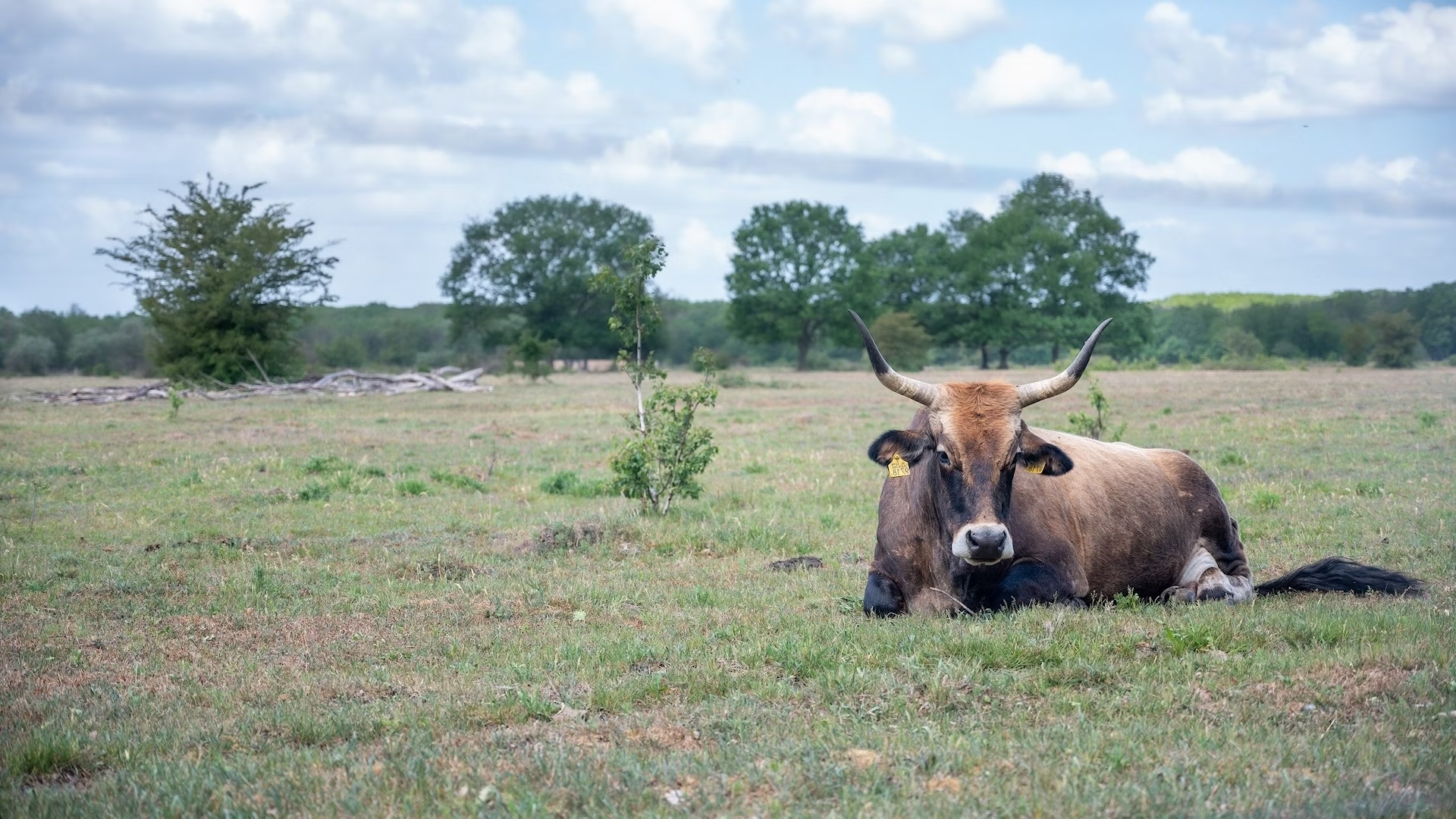
Though the aurochs is long extinct, cattle are used as proxies on rewilding projects to mimic their behaviour. In particular, tauros have been bred to show key characteristics of aurochs. While it’s not the same species as the aurochs, they can mimic the natural behaviours of aurochs and act as a keystone species in areas where aurochs used to roam. This page explores the aurochs’ history, its role in shaping our landscapes and how tauros can fill the empty niche it left behind.
How it shapes the landscape
Cattle, such as the extinct aurochs, are habitual grazers. They love fine grasses and flowering plants in spring and summer. Their grazing enables a wonderful array of wildflowers to coexist in swards by ensuring more boisterous plant species can’t dominate. They nibble at the shoots of shrubs and young trees, break up shrublands and create and maintain diverse mosaics of open vegetation.
Cattle are strong, solid creatures and the aurochs, the wild ancestor of all domestic cattle, was the biggest of them all. Besides the woolly mammoth and woolly rhinoceros, the aurochs was one of Europe’s tallest land mammals. In northern Europe, aurochs bulls could reach up to 180cm at the shoulder. Now extinct, this large keystone species once thrived across Europe and Britain’s grasslands.
It would disturb the ground with its hooves, rip the sward with fierce horns and create bare ground much appreciated by basking insects and reptiles. The death of an aurochs would be valuable to a panoply of animals (including humans) able to feast on their carcass. The carcass juices would run into the soil, creating a hyper-fertile patch of ground ready to be rapidly colonised by nutrient-loving plants. Their dung was a vital resource for numerous highly specialised insects and fungi.
Where it likes to be
Aurochs would have been widespread wanderers, roaming across huge landscapes, between open grasslands and shady woodlands, in search of the freshest vegetation while evading the attention of larger predators. Their range stretched from southern Scandinavia to North Africa and from the UK to Central Asia.
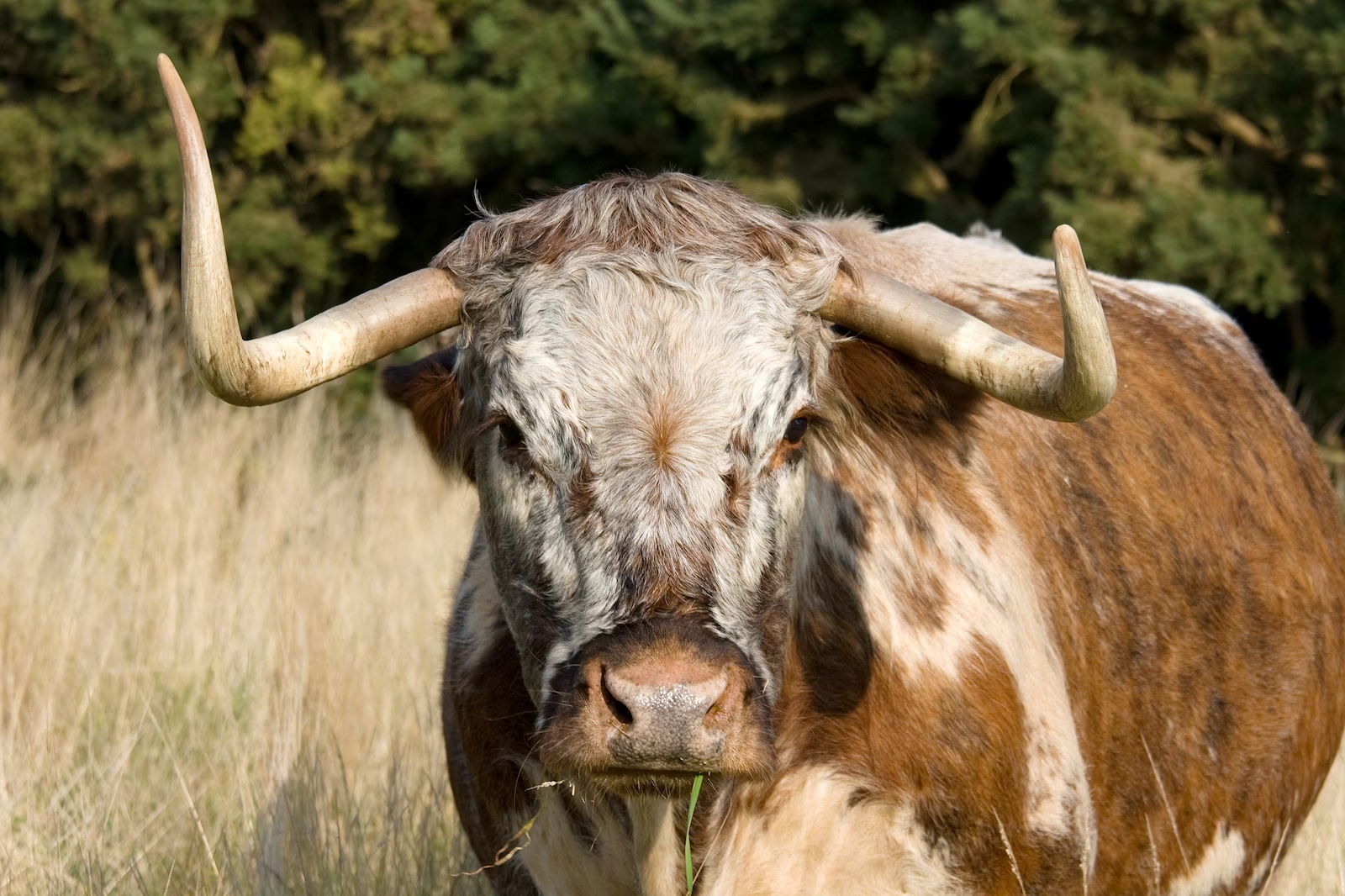
How much space they need
Hardy native cattle today can thrive within a few tens of hectares, but herds will only start to act more naturally wild – and so shape the landscape around them as described above – when they have access to thousands, or tens of thousands, of hectares.
Background story
Before human arrival, Britain was likely covered in a mosaic of grassy plains, shrublands and scattered and more extensive woodlands – the ideal habitat for aurochs. They would have formed herds and wandered vast, wild landscapes, moving from open grassland plains to sunny glades in summer, and into shrublands and woodlands to browse woody vegetation in autumn and winter.
Around 1300 BC, the aurochs disappeared from Britain, mainly due to habitat loss and hunting. Their place was taken by our own domesticated grazers. Wild aurochs survived in Europe until 1627 when the last known individual died in Poland’s Jaktorow Forest. Their DNA lives on in our hardier native breeds, such as the Highland and Longhorn. These breeds provide a worthy stand-in for aurochs in rewilding projects.

Can we have them in Britain?
Back-breeding the aurochs’ closest living relatives in Europe has produced the tauros, its closest living descendant. Rewilding Europe has successfully introduced the tauros to the Côoa Valley in Portugal and the Danube Delta.
In Britain, hardy native cattle, such as Highland cattle, are one of the more straightforward species used to replicate some of the ecological roles once fulfilled by the aurochs. However, letting them be properly wild is difficult because of legislation governing livestock.
While the tauros isn’t the same species as the extinct aurochs, they can mimic the natural behaviours of aurochs and act as a keystone species in areas where aurochs once roamed. Tauros were back-bred from six ancient cattle species to be as genetically, physically and behaviourally similar as possible to the aurochs.
In 2026, the Tauros Project, led by Trees for Life, will reintroduce a herd of 15 tauros to Dundreggan in Scotland. This five-year project, supported by funding from Rewilding Britain, aims to enhance biodiversity, education and ecotourism, and explore how tauros can be a powerful ally in tackling tourism and explore how tauros can be a powerful ally in tackling the nature and climate emergencies.

Taking tauros to Scotland
We’re supporting Trees for Life to develop the feasibility of bringing tauros to their Dundreggan Estate. The project aims to test the impact of a tauros herd exhibiting natural behaviours on the rewilding project. Find out more about how we’re funding the acceleration of rewilding across Britain.
In summary
- Extinct ecosystem engineer
- Likes grasslands, shrublands and woodlands
- Vital component of every mainland and larger island habitat in Britain
- Wild cattle dung supports numerous highly specialised insects and fungi
- Native cattle breeds (such as the Highland, Longhorn or Belted Galloway) can be used as a proxy for the aurochs
